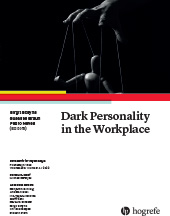Abstract
Abstract. This study tests the relationships between grandiose narcissism and affective, calculative, social-normative motivation to lead (MTL), avoidance to lead, and between vulnerable narcissism and affective MTL and avoidance to lead. Further, we assess the moderating effect of narcissistic organizational identification (NOI). As expected, grandiose narcissism correlated positively with three dimensions of MTL, though the relationship with social-normative MTL disappeared when controlling for NOI and the interaction. Vulnerable narcissism was positively related to avoidance to lead, but not too affective MTL. Subsequent regression analysis revealed that vulnerable narcissism related negatively to affective MTL for individuals with low or moderate (but not high) NOI. Our study contributes to the integration of narcissism and leadership research by examining a differentiated conceptualization of narcissism, explaining why some individuals may actively approach while others actively avoid leadership, and one of the boundary conditions which may facilitate narcissists’ MTL.
References
(2020). Motivation to lead: A meta-analysis and distal-proximal model of motivation and leadership. Journal of Applied Psychology, 105(4), 331–354. https://doi.org/10.1037/apl0000439
(2010). Grandiose narcissism versus vulnerable narcissism in threatening situations: Emotional reactions to achievement failure and interpersonal rejection. Journal of Social and Clinical Psychology, 29(8), 874–902. https://doi.org/10.1521/jscp.2010.29.8.874
(2017). Leader narcissism and outcomes in organizations: A review at multiple levels of analysis and implications for future research. Frontiers in Psychology, 8, Article 773. https://doi.org/10.3389/fpsyg.2017.00773
(2001). Toward a theory of individual differences and leadership: Understanding the motivation to lead. Journal of Applied Psychology, 86(3), 481–498. https://doi.org/10.1037/0021-9010.86.3.481
(2012). FÜMO: Hamburger Führungsmotivationsinventar
[Hamburg Leadership Motivation Inventory] . Hogrefe.(2021). Justifications of entitlement in grandiose and vulnerable narcissism: The roles of injustice and superiority. Personality and Individual Differences, 168, Article 110345. https://doi.org/10.1016/j.paid.2020.110345
(2018). Larger than life. Narcissistic organizational identification in leadership. Organizational Dynamics, 47(1), 8–16. https://doi.org/10.1016/j.orgdyn.2017.06.003
(2015). Narcissistic organizational identification: Seeing oneself as central to the organization’s identity. Academy of Management Review, 40(2), 163–181. https://doi.org/10.5465/amr.2013.0103
(2021). Different forms of narcissism and leadership. Zeitschrift für Psychologie. Advance online publication. https://doi.org/10.1027/2151-2604/a000480
(2012). The five-factor narcissism inventory: A five-factor measure of narcissistic personality traits. Journal of Personality Assessment, 94(5), 500–512. https://doi.org/10.1080/00223891.2012.670680
(2020). The “why” and “how” of narcissism: A process model of narcissistic status pursuit. Perspectives on Psychological Science, 15(1), 150–172. https://doi.org/10.1177/1745691619873350
(2015). Gender differences in narcissism: A meta-analytic review. Psychological Bulletin, 141(2), 261–310. https://doi.org/10.1037/a0038231
(2018). The PROCESS Macro for SPSS and SAS version 3.0 [Computer software]. https://afhayes.com
(2021). Now you see me, now you don’t: A conceptual model of the antecedents and consequences of leader impostorism. Journal of Management. Advance online publication. https://doi.org/10.1177/01492063211020358
(2021). Five factor narcissism and threat to fundamental needs following social exclusion engendered by the Cyberball game. Personality and Individual Differences, 168, Article 110279. https://doi.org/10.1016/j.paid.2020.110279
(2011). Grandiose and vulnerable narcissism: A nomological network analysis. Journal of Personality, 79(5), 1013–1042. https://doi.org/10.1111/j.1467-6494.2010.00711.x
(2016). Thinking structurally about narcissism: An examination of the Five-Factor Narcissism Inventory and its components. Journal of Personality Disorders, 30(1), 1–18. https://doi.org/10.1521/pedi_2015_29_177
(2011). All I need is a stage to shine: Narcissists’ leader emergence and performance. The Leadership Quarterly, 22(5), 910–925. https://doi.org/10.1016/j.leaqua.2011.07.011
(2021). Why are grandiose narcissists more effective at organizational politics? Means, motive, and opportunity. Personality and Individual Differences, 172, Article 110557. https://doi.org/10.1016/j.paid.2020.110557
(2013). Self-presentation style in job interviews: The role of personality and culture. Journal of Applied Social Psychology, 43(10), 2042–2059. https://doi.org/10.1111/jasp.12157
(2010). Pathological narcissism and narcissistic personality disorder. Annual Review of Clinical Psychology, 6, 421–446. https://doi.org/10.1146/annurev.clinpsy.121208.131215
(2021). Climb up your ego! Narcissistic status pursuit and motivation to lead. Personality and Individual Differences, 177, Article 110830. https://doi.org/10.1016/j.paid.2021.110830
(1988). A principal-components analysis of the Narcissistic Personality Inventory and further evidence of its construct validity. Journal of Personality and Social Psychology, 54(5), 890–902. https://doi.org/10.1037/0022-3514.54.5.890
(2012). Grandiose and vulnerable narcissism. European Psychologist, 17(4), 279–290. https://doi.org/10.1027/1016-9040/a000100
(1998). Why workers still identify with organizations. Journal of Organizational Behavior, 19(3), 217–233. https://doi.org/10.1002/(SICI)1099-1379(199805)19:3<217::AID-JOB931>3.0.CO;2-N
(2015). Development of a short form of the Five-Factor Narcissism Inventory: The FFNI-SF. Psychological Assessment, 27(3), 1110–1116. https://doi.org/10.1037/pas0000100
(2003). Who’s to blame? Narcissism and self-serving attributions following feedback. European Journal of Personality, 17(6), 465–478. https://doi.org/10.1002/per.497
(2019).
A trifurcated model of narcissism: On the pivotal role of trait antagonism . In J. D. MillerD. R. LynamEds., The handbook of antagonism: Conceptualizations, assessment, consequences, and treatment of the low end of agreeableness (pp. 221–235). Academic Press.(2008). Narcissistic subtypes and contingent self-esteem: Do all narcissists base their self-esteem on the same domains? Journal of Personality, 76(4), 753–774. https://doi.org/10.1111/j.1467-6494.2008.00503.x



